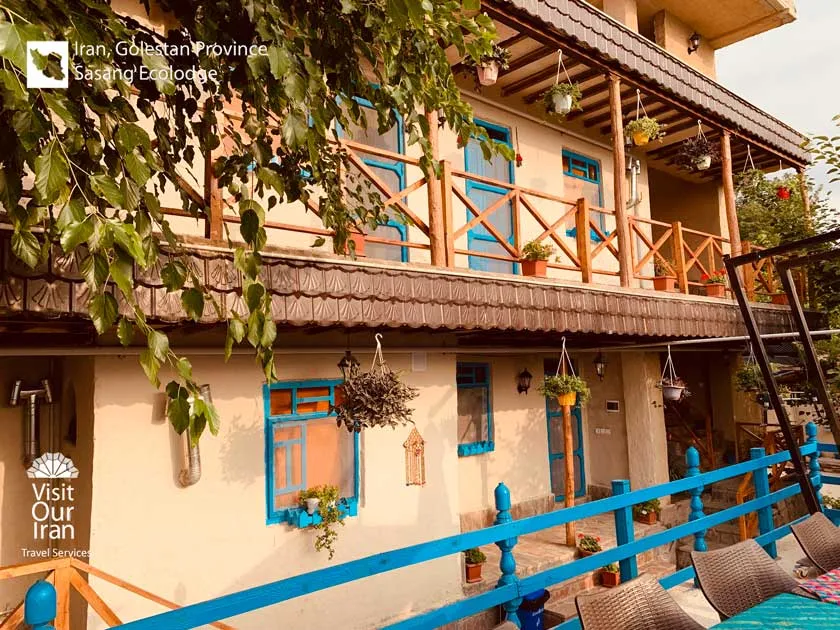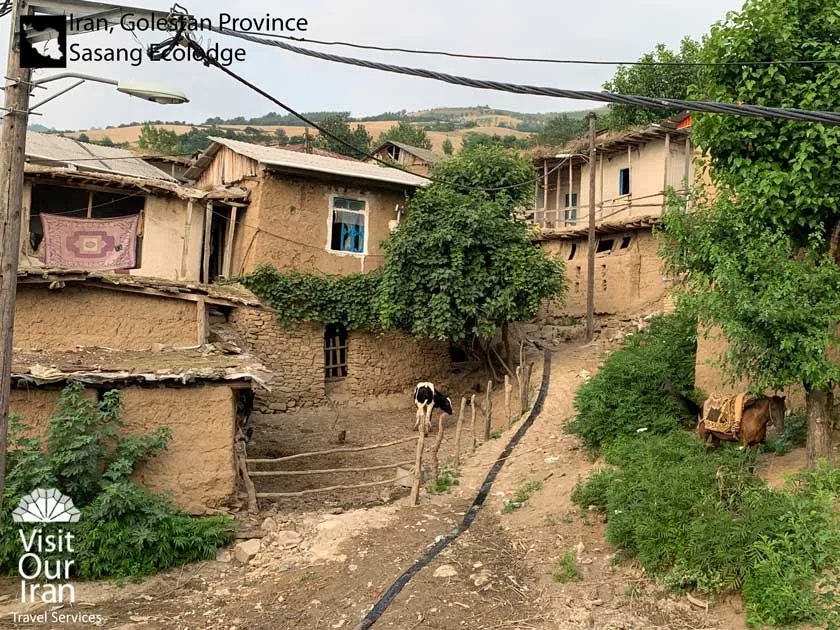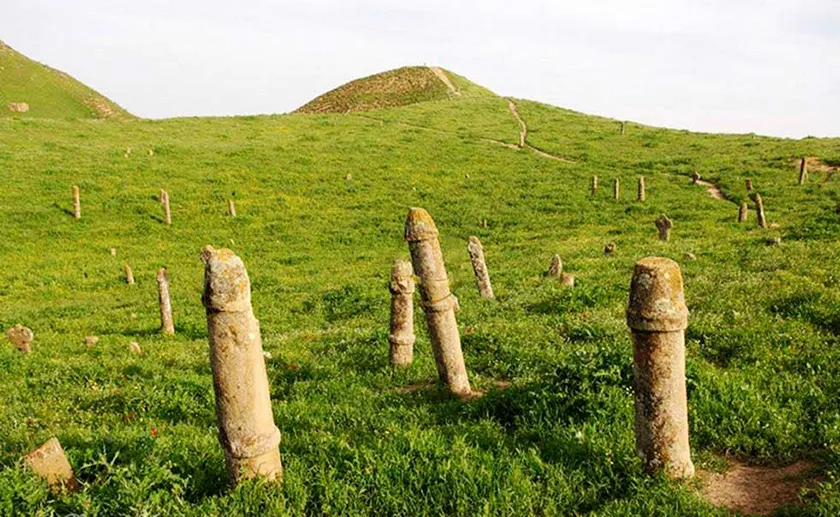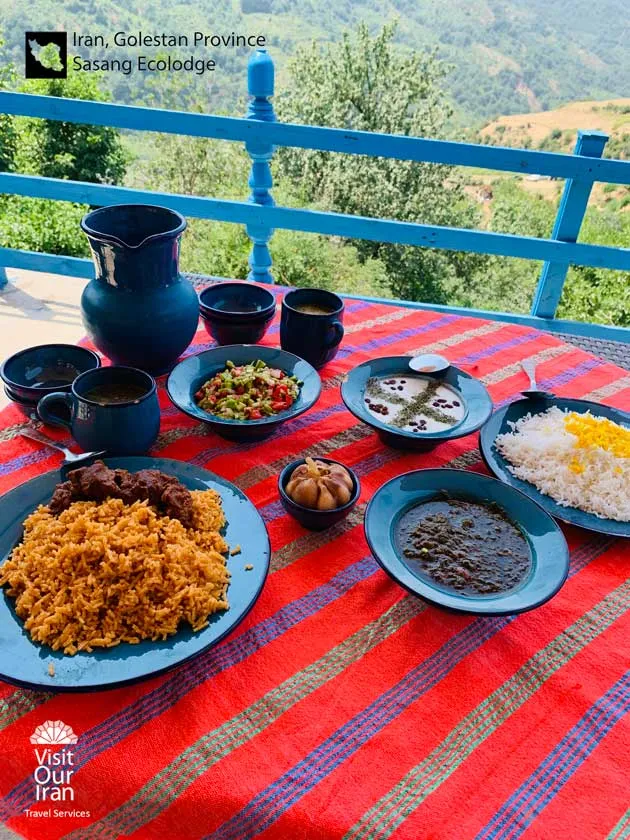Raheleh Ahmadi: What’s her story?
In September 2015, Raheleh Ahmadi resigned from her main job as a consultant engineer at Metra in the specialty of Iranian Railways for work and living in a village away from urban life in Tehran and came to Golestan province. Of course, Ms. Ahmadi has lived in Golestan till she was 18 years old and she was more or less familiar with the climate and culture of this region. She was not originally from Golestan but grew up in this province. In the second six months of the year, Raheleh searched for a village with tourism potential. She had neither a fatherly property in the village nor had a history of living in and not a family member. Mostly she was looking for a village in the highlands and forest slopes. She knew that Turkmenistan’s regions have great tourist attraction potential, but because she decided to live in the area where she worked. And these areas were scorching and immovable in a hot year. Then she removed these regions from her list.
Besides, she was looking for a village that was left unspoiled. Recently, the texture of communities has changed in Golestan and has turned to houses made with stones. She also attempted to find a tourist attraction place at the intended location, which could turn tourists one day without driving cars. So, she was looking for natural attractions like waterfalls, rivers, or forests. Thus, from 70 to 80 villages in six months, in Nowruz 2016, she selected the Sasang village. At the end of Sasang Road, leading to an impasse, there is a village where all the cars are parked. Although in Nowruz everywhere is crowded, this village is quiet. All the houses in this village are made of straw-clay plaster. There are no concrete and cement houses in this village. The village is tranquil due to lack of traffic and cars.
All the villagers hated their village. They believed that life in this place is tough, and they have nothing to do. They are far from the city, and their children have left there to Tehran where they work as caretakers. One of the young boys in the village showed a waterfall to Raheleh that took 30 minutes to reach it without a car. The path to the waterfall was a forest road without a car’s route, which led to a waterfall full of water and a large pond.

After observing the surrounding area, Ms. Ahmadi contacted the head of villagers and arranged meetings and said that the tourism work would be done in this place. Mrs. Ahmadi asked for a house or land to be able to live by buying it. It took a year and a half for her to rent a house made of straw-clay plaster in that village. Ms. Ahmadi, with the help of one of the architects, restored this mud house in two and a half months. The first group of tourists came to this place in October 2017. After making this place alive, a website (http://www.sasang.ir/en/), a telegram channel, and an Instagram page were dedicated to this place.
Due to a large number of guests and the small house, Ms. Ahmadi bought land and began to build it. In Nowruz 2018, a guest room and a kitchen were built, and the villagers also helped her by renting their own homes. From February 8th, 2018, the decision was made to create nine other rooms and the rooms were built on March 29th, the same year, and the residence was reserved until Farvardin16, 2018. Unfortunately, on March 28th, the flood began, and the road route was destroyed until May 11th, and tourists could not come.
Currently, 4-5 people are working permanently in residence. At the weekend, which is the resort is almost crowded, 2 to 3 other people join to help. Two other women are also engaged in handicraft industry in this village for knitting and doll making. Some residents of the village also sell pickles and handmade cuisine to tourists. Sometimes Ms. Ahmadi goes to these industries and house with tourists. In June and July, fewer tourists visit these places because of the warm weather. In May, because the main product of this place is peas, and the weather is excellent, tourists visit the large farms and harvest peas.
In October and November, saffron fields are customary which you should harvest it before the dawn. Sometimes, some villagers sit and sing alongside guests. In this village, there are large groups of Turkmen, Sistani, Baloch, and Qizilbash people who sometimes Sistani dance groups dance for the guests.
Sustainable Tourism in Iran
If this tourism event did not happen to this village, then the town could not have lived for more than ten years. The most crucial thing is the resurrection of this village. The capacity of the number of guests in this resort is typically 29 to 30 people. Although travelers and guests commute a lot in this village, the village still lives in rural form. Before the arrival of tourists to the town, the living conditions in Sasang is explained to them.

Sasang’s Literal Meaning
Sasang means rubbing of the stone. When you walk into the village, you will see the riverbed with large rocks located in this route. The villagers say that they used to build their houses in the old days with stones, which are not available anymore. However, with more research, we concluded that “SA” at the beginning of the word Sasang meant the stone used in rubbing. There are remnants of rocky mills in the waterfall area, which may be related to this name.
Inside the rooms of the residence
The residence has two parts. The first part of it is the central part of the house, which is the old, renovated home, and goes back to about 50 to 60 years old. Before the renovation, no one had lived there for 20 years. The entire building is made of mud and holm oak wood and has three bedrooms, a living room, and a large balcony. Inside the rooms, there is a firewood chimney. In the old days, everyone used to cook on these fireplaces, and in the city’s architecture, there was no space for the kitchen. Kitchens are not even defined in new homes there.
In the newly constructed building, each room has a toilet (both for Iranian and foreigners), and a fireplace and some bedrooms have a bed and air conditioner. In fact, in these places, due to the weather, it is not necessary to turn on the cooler.
The remarkable thing is that the names of the rooms here are taken from the trees’ names. There are berry trees in all the Sasang’s houses and a silk weaving in this village. From April 20th to June 10th, ladies living in the town make one of their rooms empty to nurture their silk cocoon and use the leaves of the berry trees to feed these inchworms. On the floor, they spread Chamaz (a kind of moss) and lay the Noghan seeds on it, and adjust the humidity and temperature of the room. Torbat Jam traders bought these cocoons and turned them into strings in a city in the northern Khorasan called Baik, and in Tabriz and Isfahan, these threads are painted. In the old days, spinning was also done in this village.
Attractive tourists’ experiences
For most tourists, it’s fascinating that a woman moved from a city to a village and change a ruinous building to such a residence. Also, the fact that the town has not lost its originality is s attracted something that caught the attention of many visitors. It is also interesting for these people to cook local cuisine, such as Ash Reshte and Sour Chicken.

Tourist programs in Sasang
Visiting Golestan National Park
This visit is done in all seasons. Mainly in two seasons, from September 15th to October 15th, which this period is referred to “Gav Bangi,” the red deer that lives in the northern forests of Iran, mates during this season. This deer forms a shrine and creates a loud noise to make any other deer elsewhere far from his female deer. During this time, Gav Bangi tours are organized and in the habitat of deer with the permission of the environmental organization, a camp arranged. These deers only settle in Golestan National Park and Jahan Nama zone in Gorgan. At sunrise and sunset, the deer is very close to the camp; therefore, the forester emulates deer’s voice with having its horns, so that deer mistakenly enters this place when it comes to hearing it. This action is called Gav Bangi action.
Gooch Masti
The primary habitat of the Urial ram is in the Golestan National Park and the Northern Forests of Iran, and its mating season is from December to January. There are three types of rams in Iran, one of which is the Urial ram. During the mating season, these rams go down in altitudes and do not pay attention to the surrounding people.
In other seasons, people who are interested in visiting this park will have a one-day tour. Visiting Aqsoo fountain, Zav fountain (which provides the water of Golestan National Park), National Wildlife Museum, plain of deer, and Mirza Bailoo plain.
Khalid Nabi tour or Turkmen Sahra package

In the morning after having breakfast, a car is at guests’ disposal and takes them to the Khalid Nabi cemetery. This cemetery is one of the main attractions of the northeast of Iran. The main reason for the charm of this place is the presence of gravestones that are used in various sizes for the female and male genitals. Similar to these symbols, these rocks are also found in East Asia, India, and Vietnam, and the history of these rocks in Iran dates back to 700 or 800 years ago in the Seljuk Empire. The last grave in the Khalid Nabi cemetery goes back to 70 years ago. The residence is 2 hours far from the cemetery. After visiting the cemetery in the morning, the visitors will go to the Turkmen arbors, which is 10 to 20 minutes’ walk. In these arbors, they listen to Turkmen music, and Turkmen dishes are served. Turkmens do not come to Sasang, but tourists visit Turkmen to listen to the Turkmen’s Dotar and eat their food. The hostess explains tourists about the altar and customs of the Turkmens, and the Turkmen women show their handicrafts. After taking a nap and drinking tea made on the fire, tourists along with the Turkmen visit the Turkmen horses. Each tourist, along with a cavalier, sits on a horse and patrols in the Turkmen plains. They come back from the path of the Gabos Dome, the tallest brick tower in the world which is registered at UNESCO. The best season to visit this place in March, April, and May. In this area wild free horses live as well.
The Sasang jungles are also along with the Hyrcanian forests, which we already written about these UNESCO-recorded forests in our blog. In these forests, there are varieties of plants and animals. There are also evangelical trees (iron trees) that remain from the third geological period, and one of the main species of the Hyrcanian forests is an evangelical tree. Also, there are Taxus baccata trees that are one of the most endangered trees on the planet. On the way to the Sasan Waterfall, which is in the heart of the Hyrcanian forests, you can see evangelical, alder, rash, maple, Narvar, van or Zaban Gonjeshk trees.

pecial Sasang Dishes
The main meal of this region is sour Tahchin. This meal includes local rice of Minoodasht in North of Iran, and Sasang’ wild local vegetables (such as Alerzo, Nareshkunu, Nrenji, and Mushikono). Then, these vegetables are combined and cooked with oil and are flavored with grenadine. In the end, they put these vegetables in the pot, then chicken on the vegetables and they pour the rice on the material.
A variety of local Ash (sour Ash and yogurt Ash cooked with rice) is also prepared in this place. Most foods in this village are cooked with vegetables that grow in this village. Also, borage and Aloysia Citrodora (Beh Limoo) herbal tea is prepared using plants grown in the village.